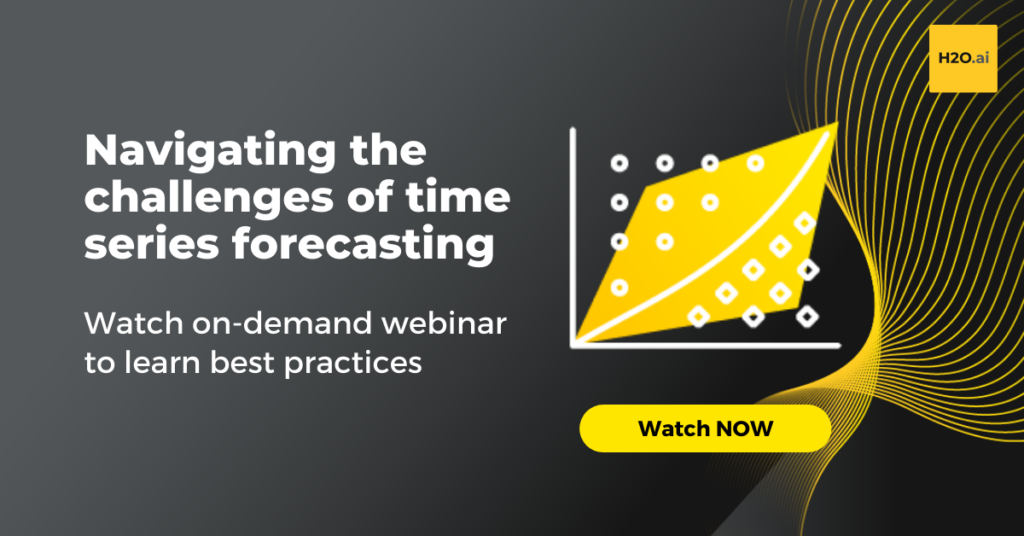Earlier this year, my colleague Vishal Sharma gave a talk about time series forecasting best practices. The talk was well-received so we decided to turn it into a blog post. Below are some of the highlights from his talk. You can also follow the two software demos and try it yourself using our H2O AI Cloud .
(Note : The video links with timestamps may not work correctly with your browser. If so, right-click on the links and open them in a new window/tab.)
Overview of Time Series Forecasting
Vishal first discussed some use cases in different domains and explained what makes time series forecasting a special case of machine learning.
Time Series Forecast Use Cases [Video @ 0:53]
Time Series Forecast is a Special Case of Machine Learning [Video @ 1:50]
Time Series Pipeline
A typical time series pipeline is shown below. Vishal focused on preprocessing and forecasting components of the pipeline in this talk.
A Typical Time Series Pipeline [Video @ 3:05]
Time Series Preprocessing
Some time series forecasting methods require data preprocessing. Here are some common techniques:
Common Time Series Preprocessing Techniques [Video @ 4:06]
Features and Patterns for Forecasting [Video @ 5:13]
Commonly Used Time Series Models
Vishal also discussed some of the commonly used time series models like AutoRegressive Integrated Moving Average (ARIMA) and Exponential Smoothing.
Time Series Model – ARIMA [Video @ 7:16]
Time Series Model – Exponential Smoothing [Video @ 10:32]
Time Series Model – Others [Video @ 12:50]
Challenges and Practical Considerations
Here is one of the key takeaways – time series forecasting challenges and practical considerations:
Time Series Model – Challenges [Video @ 14:18]
Time Series Model – Practical Considerations [Video @ 15:23]
Time Series Forecasting with H2O
Vishal then explained the inner workings of time series forecasting with our platform in great detail.
Automatic Machine Learning with H2O [Video @ 20:56]
Time Series Modeling Approach and Feature Engineering [Video @ 21:57]
Time Series Feature Transformers
Time Series Feature Engineering – Lag Interactions [Video @ 24:09]
Making Use of the Top-Performing Algorithms from AI Community [Video @ 25:37]
Model Validation [Video @ 26:32]
Predictions with Refit [Video @ 29:08]
First Demo – TSA Checkpoint Travel Numbers
The first demo was about forecasting the number of passengers. You can find the data from Transportation Security Administration (TSA) here .
TSA Passengers Demo [Video @ 29:44]
Time Series Model Explanation [Video @ 40:31]
Second Demo – Demand Sensing Wave App
The second demo was a demand sensing Wave application. You can find more examples from our AI Cloud app store.
Demand Sensing Demo [Video @ 42:04]
Recap
In short, time series models require data analysis, preprocessing, and hyperparameters optimization. Automatic machine learning (AutoML ) is a practical choice for time series forecasting as it can handle multiple constraints. For some use cases, it is useful to incorporate COVID data in model updates for better predictive power.
Key Takeaways
Time series AutoML with our AI Cloud platform can:
- capture multiple temporal behaviours
- carry out extensive experiments with linear/non-linear/hybrid models
- optimize hyperparameters while considering practical and real-world constraints








